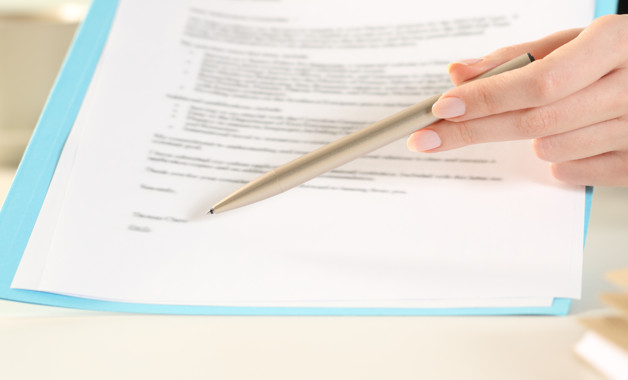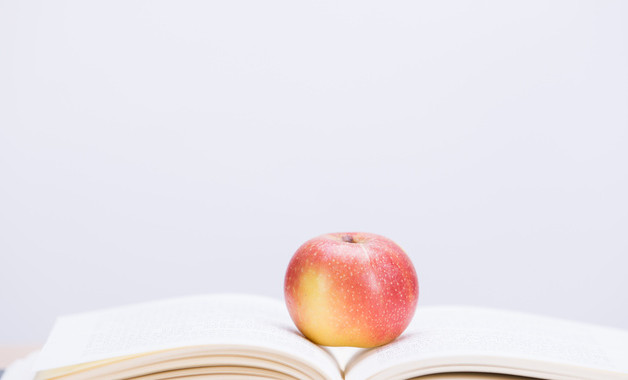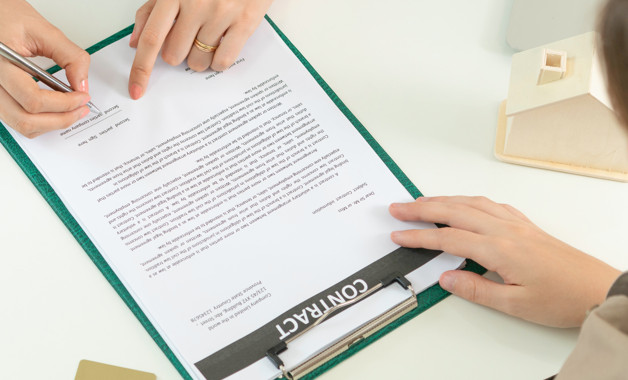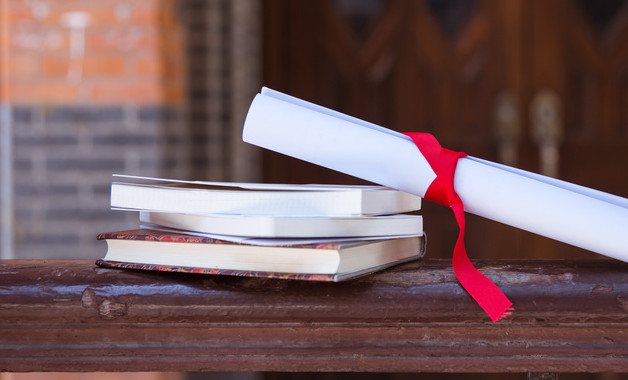
第1篇 小学英语知识点总结—— 数词
数词
1、基数词:表示数目多少。
注意:数字“0”可以读作“zero”,也可以读作字母“o”。
2、序数词:表示顺序先后。
基数词变序数词记忆口诀:
一、二、三,需要记,八去t,九省e,ve结尾时,f来代替,
ty结尾时,y变ie,再加th,若是几十几,前基后序别忘记。

第2篇 小学英语知识点总结
小学英语知识点总结
小学英语知识点总结
1、动词变为动名词的规则:
动词变为动名词,即是动词加ing。一般要遵循以下三条规则:
(1)一般情况下,在动词的后面直接加ing。如:play—playing read—reading do—doing go—going
(2)以不发音的字母e结尾的动词,要去掉不发音的字母e,再加ing。如:write—writing ride—riding make—making dance—dancing
(3)以单元音加单辅音结尾的重读闭音节,要双写最后一个辅音字母,再加ing。如:run—running swim—swimming put—putting sit—sitting
2、关于第三人称单数:
动词变为第三人称单数形式的规则:
(1)在一个句子中,如果主语人称既不是你,也不是我,而是另外的一个人,这时的'人称叫做第三人称单数。
(2)在第三人称单词的句子中,动词要使用第三人称单词形式。
(3)动词变为第三人称单数形式,要遵循以下规则:
①一般情况下,在动词的后面直接加s。如:
read--readsmake—makes write—writes
②以字母s, x, o , sh , ch结尾的动词,在词尾加es。如:do—does wash—washes teach—teaches go—goes pass—passes
③以y结尾的动词分为两个情况,以元音字母加y结尾的动词,在词尾直接加s。如:play—plays buy--buys
以辅音字母加y结尾的动词,要把y变为i,再加es.如:study--studies
④以f , fe结尾的名词,先把f,fe变为v,再加-es.
⑤特殊变化:have--has
(4)在一个第三人称单数的句子中,只要句子中出现了does或者其否定形式doesn’t.该句子中的其他动词就要使用原形。
(5)第三人称单数的肯定句在变为否定句时,在动词的前面加doesn’t. 动词恢复原形。如:he lives in beijing.---he doesn’t live in beijing.
(6) 第三人称单数的陈述句在变为一般疑问句时,用does开头,后面的动词也要变为原形。如:he lives in beijing.---does he live in beijing?
3、注意几个单词的变化:
hobby(复数形式)—hobbies have to(同义词)—must
总结二:小学英语知识点总结:代词
人称代词和物主代词
1、人称代词主格和宾格的区别:主格通常位于句中第一个动词之前(有时候位于than 之后),宾格一般位于动词或介词之后。
2、物主代词形容词性与名词性的区别:形容词性用时后面一般要带上名词,名词性则单独使用,后面不带名词。
人称代词 物主代词
主格 宾格 形容词性 名词性
我 i me 我的 my mine
你,你们 you you 你的,你们的 your yours
他 he him 他的 his his
她 she her 她的 her hers
它 it it 它的 its its
我们 we us 我们的 our ours
他(她,它)们 they them 他(她,它)们的 their theirs
总结三:小学英语语法知识点总结:名词变复数变化规则
1、一般情况下,直接加-s,如:book-books, bag-bags, cat-cats, bed-beds
2、以s、 x、 sh、 ch结尾,加-es,如:bus-buses, box-boxes, brush-brushes, watch-watches
3、以“辅音字母+y”结尾,变y为i, 再加-es,如:family-families, strawberry-strawberries
4、以“f或fe”结尾,变f或fe为v, 再加-es,如:knife-knives
5.不规则名词复数: man-men, woman-women, policeman-policemen, policewoman-policewomen, mouse-mice child-children foot-feet,、tooth-teeth fish-fish, people-people, chinese-chinese, japanese-japanese
6、不可数名词(单复数形式不变)
bread, rice, water ,juice etc.

第3篇 小学英语知识总结
小学英语知识总结1
一、名词
1.不可数名词,如水类,肉类,饭类等
2.可数名词有单数和复数两种形式。复数的部分规则如下:
a.一般情况下,直接加-s,如:book-books,bag-bags,cat-cats,bed-beds
b.以s.x.sh.ch结尾,加-es,如:bus-buses,box-boxes,brush-brushes,watch-watches
c.以o结尾的名词,有在加es,有的加s。一般有生命的名词,复数加es,没有生命的名
词加s,如:有生命的tomatotomatoespotatapotatoes;没有生命的:photo--photos
d.以“辅音字母y”结尾,变y为i,再加-es,如:family-families,strawberry-strawberriese.以“f或fe”结尾,变f或fe为v,再加-es,如:knife-knivesleafleavesf.不规则名词复数:
man-men,woman-women,policeman-policemen,policewoman-policewomen,child-childrenfoot-feet,.tooth-teethfish-fish,people-people,chinese-chinese,
japanese-japanese,sheepsheep,deerdeer
练习题:写出下列各词的复数形式
i_________he/she/it_________this___________that______watch_______child_______photo________diary______day________foot________book_______dress________tooth_______sheep______box_______strawberry_____peach______sandwich______dish_______bus_______man______woman_______deer_______
二.动词时态:
1、一般现在时
一般现在时基本用法介绍no.1一般现在时的功能
1.表示事物或人物的特征、状态。如:theskyisblue.天空是蓝色的。
2.表示经常性或习惯性的'动作。如:igetupatsixeveryday.我天天六点起床。3.表示客观现实。如:theearthgoesaroundthesun.地球绕着太阳转。一般现在时的构成
1.be动词:主语+be(am,is,are)+其它。如:iamaboy.我是一个男孩。
2.行为动词:主语+行为动词+(其它)。如:westudyenglish.我们学习英语。当主语为第三人称单数(he,she,it)时,要在动词后加'-s'或'-es'。
如:marylikeschinese.玛丽喜欢汉语。
no.2一般现在时的变化1.be动词的变化。
否定句:主语+benot+其它。
如:heisnotaworker.他不是工人。一般疑问句:be+主语+其它。如:-areyouastudent?-yes.iam./no,i'mnot.
特殊疑问句:疑问词+一般疑问句。如:whereismybike?2.行为动词的变化。
否定句:主语+don't(doesn't)+动词原形+(其它)。如:idon'tlikebread.
当主语为第三人称单数时,要用doesn't构成否定句。如:hedoesn'toftenplay.
一般疑问句:do(does)+主语+动词原形+其它?如:-doyouoftenplayfootball?-yes,ido./no,idon't.
当主语为第三人称单数时,要用does构成一般疑问句。如:-doesshegotoworkbybike?-yes,shedoes./no,shedoesn't.
动词第三人称单数的变化规则:
1.一般情况下,直接加-s,如:cook-cooks,milk-milks
2.以s.x.sh.ch.o结尾,加-es,如:do---does,wash-washes,watch-watches,go-goes3.以“辅音字母y”结尾,变y为i,再加-es,如:study-studies4.不规则:havehas一般现在时用法专练:
1、写出下列动词的第三人称单数
drink________go_______stay________make________look_________have_______pass_______carry____come________watch______plant_______fly________study_______brush________do_________teach_______wash_______
2、用括号内动词的适当形式填空。
1.heoften________(have)dinnerathome.2.danielandtommy_______(be)inclassone.3.we_______(notwatch)tvonmonday.4.nick_______(notgo)tothezooonsunday.5.______they________(like)theworldcup?
6.what_______theyoften_______(do)onsaturdays?
7._______yourparents_______(read)newspaperseveryday?8.thegirl_______(teach)usenglishonsundays.
9.sheandi________(take)awalktogethereveryevening.10.there________(be)somewaterinthebottle.11.mike_______(like)cooking.
12.they_______(have)thesamehobby.
13.myaunt_______(look)afterherbabycarefully.14.youalways_______(do)yourhomeworkwell.15.i_______(be)ill.i’mstayinginbed.
16.she_______(go)toschoolfrommondaytofriday.17.liutao_______(do)notlikepe.18.thechildoften_______(watch)tvintheevening.
19.suhaiandsuyang_______(have)eightlessonsthisterm.20.-whatday_______(be)ittoday?-it’ssaturday
2、现在进行时
1).现在进行时表示现在正在进行或发生的动作,也可表示当前一段时间内的活动或现阶
段正在进行的动作。
2).现在进行时的肯定句基本结构为be加动词ing.3).现在进行时的否定句在be后加not。
4).现在进行时的一般疑问句把be动词调到句首。
动词加ing的变化规则
1.一般情况下,直接加ing,如:cook-cooking
2.以不发音的e结尾,去e加ing,如:make-making,taste-tasting3.假如末尾是一个元音字母和一个辅音字母,双写末尾的辅音字母,再加ing,如:run-running,
stop-stopping
现在进行时专项练习:
1、写出下列动词的现在分词:
play________run__________swim_________make__________go_________like________write_________ski___________read________have_________sing________dance_________put_________see________buy_________love____________live_______take_________come________get_________stop_________sit________begin________shop___________2、用所给的动词的正确形式填空:
1.theboy__________________(draw)apicturenow.
2.listen.somegirls_______________(sing)intheclassroom.3.mymother_________________(cook)somenicefoodnow.4.what_____you______(do)now?
5.look.they_______________(have)anenglishlesson.6.they____________(not,water)theflowersnow.
7.look!thegirls________________(dance)intheclassroom.
8.whatisourgranddaughterdoing?she_________(listen)tomusic.9.it’s5o’clocknow.we_____________(have)suppernow10.______helen____________(wash)clothes?yes,sheis.
3、将来时态
1)、概念:表示将要发生的动作或存在的状态及打算、计划或预备做某事。句中一般有以下时间状语:tomorrow,nextday(week,day,month,year),soon,thedayaftertomorrow(后天)等。2)、基本结构:①begoingtodo;②willdo.
3)、否定句:在be动词(am,is,are)l后加not或情态动词will后加not成won’t。例如:i’mgoingtohaveapicnicthisafternoon.→i’mnotgoingtohaveapicnicthisafternoon.4)、同义句:begoingto=will
iamgoingtogoswimmingtomorrow(明天).=iwillgoswimmingtomorrow.
练习:
1.我打算明天和朋友去野炊。
i_____________________haveapicnicwithmyfriends.i________haveapicnicwithmyfriends.2.我们将要学习英语
we_____________________learnenglish.we________learnenglish.
4、一般过去时
1).一般过去时表示过去某个时间发生的动作或存在的状态,常和表示过去的时间状语连
用。一般过去时也表示过去经常或反复发生的动作。
2).be动词在一般过去时中的变化:
⑴am和is在一般过去时中变为was。(wasnot=wasn’t)⑵are在一般过去时中变为were。(werenot=weren’t)3).句中没有be动词的一般过去时的句子
否定句:didn’t动词原形,如:jimdidn’tgohomeyesterday
动词过去式变化规则:
1.一般在动词末尾加-ed,如:work__-worked,cook-cooked2.结尾是e加d,如:live____lived
3.末尾只有一个元音字母和一个辅音字母的重读闭音节,应双写末尾的辅音字母,再加-ed,如:stop-stopped
4.以“辅音字母y”结尾的,变y为i,再加-ed,如:study-studied5.不规则动词过去式:
am,is-was,are-were,do-did,see-saw,say-said,
give-gave,get-got,go-went,come-came,have-had,eat-ate,take-took,run-ran,sing-sang,put-put,make-made,read-read,write-wrote,draw-drew,drink-drank,swim-swam,sit-satcan__couldbuyboughtflyflewbeginbegan
过去时练习:
写出下列动词的过去式isam_________plant________are________
drink_________play_______go________make________does_________dance________worry________ask_____taste_________eat__________put______kick_________pass_______do________1)用be动词的适当形式填空
1.i_______atschooljustnow.
2.he________atthecamplastweek.3.we________studentstwoyearsago.4.they________onthefarmamomentago.
5.yangling________elevenyearsoldlastyear.6.there________anappleontheplateyesterday.
7.there________somemilkinthefridgeonsunday.8.themobilephone_______onthesofayesterdayevening.2)用动词的适当形式填空
1.i______(watch)acartoononsaturday.
2.herfather_______(read)anewspaperlastnight.
3.we_________tozooyesterday,we_____tothepark.(go)
4.______you_______(visit)yourrelativeslastspringfestival?5.______he_______(fly)akiteonsunday?yes,he______.6.gaoshan_______(pull)upcarrotslastnationaldayholiday.
7.i____________(sweep)theflooryesterday,butmymother______.8.what______she_______(find)inthegardenlastmorning?she__________(find)abeautifulbutterfly.
小学英语知识总结2
1.文具类单词:
book书,ruler尺子,pencil铅笔,
rubber橡皮,pen钢笔,bag包
2.课堂用语指示句型:
stand up,please.请起立。
sit down,please.请坐。
open your book.打开你们的书。
close your book.合上你们的书。
3.日常问候句型:
how are you?你身体好吗?
fine,thank you.很好,谢谢你。
good morning.早上好。
4.韵律诗:____,____,i can see._____,_____,for you and me!
5.儿歌:good morning
拓展内容:schoolbag书包
good afternoon.下午好。
good evening.晚上好
and you?你呢?
i'm fine,too.我也很好。

第4篇 苏教版:小学生英语知识点总结
基础英语知识点
一、名词性物主代词
1、名词性物主代词和形容词性物主代词一样有8个:
mine yours his hers its ours yours theirs
我的你的他的她的它的我们的你们的他(她、它)们的
2、 名词性物主代词的特点:
(1)译成汉语都有'的'
(2)后面不加名词
(3)名词性物主代词=形容词性物主代词+名词
eg:1、the pen is mine 钢笔是我的(mine=my pen)
二、单数的句子变成复数的句子
把单数的句子成复数的句子很简单:变法是把能变成复数的词变成复数,但a或an要把去掉。特殊疑问词、形容词、国家及地点通常不变。
eg:把下列句子变成复数
1、 i have a car ----we have cars
2、he is an american boy. ----they are american boys
3、 it is a car ----they are cars
4、this is an eraser ----these are erasers
5、that is a backpsck -----those are backpacks
6、i'm an english teather ------we are english teathers
7、it's a new shirt---- they are new shirts
8、he's a boy ----they are boys
9、she's a singer ------they are singers
10、what'sthis in english?---- what are these in english?
必备英语知识点
1、形容词性物主代词8个:
my (我的),your(你的) ,his(他的) ,her (她的),its (它的),our (我们的),your (你们的),their(他(她、它)们的)
2、形容词性物主代词的特点:
(1)译成汉语都有'的' eg:my 我的, their 他们的
(2)后面加名词:eg:my backpack ,his name
(3)前后不用冠词 a, an ,the
this is a my eraser.(错误)
that is your a pen.(错误)
it's his the pen.(错误)
3、i(物主代词)my, you(物主代词)your ,he (物主代词)her, we (物主代词) our
英语知识
一、like一词的用法like用作及物动词,译为“喜欢”
(1)后接名词或代词,表示喜欢某人或某物。如:i like the baby very much. 我非常喜欢这个小孩。
(2)后接动名词(v. -ing),表示“喜欢做某事”,着重于习惯、爱好。如:tom likes playing football. 汤姆喜欢踢足球。
(3)后接动词不定式(to do ),表示“偶尔地喜欢做某事”,着重于某次具体的行为。如:i like reading, but i like to watch tv this evening. 我喜欢读书,但我今晚想看电视。
二、句子单数变复数,注意以下五要素
(1)主格人称代词要变成相应的复数主格人称代词,即i→we, you→you,
she,he,it→ they。
如:she is a girl. →they are girls.
(2)am,is要变为are。如:i’m a student. →we are students.
(3)不定冠词a,an要去掉。如:he is a boy. →they are boys.
(4)普通单数名词要变为复数形式。如:it is an apple. →they are apples.
(5)指示代词this,that要变为these,those。如:this is a box. →these
are boxes.

第5篇 小学一年级英语知识点总结
导语如今,英语已经成为了世界语,渗透在全世界的每一个角落,政治、经济、文化、娱乐,可以说,我们每天的生活,以及生活的每个方面,都在这种语言的影响之下。所以,从小教育孩子学习英语,是为了将来更好融入社会而刻不容缓的事情!以下是整理的相关资料,希望帮助到您!
unit 1 school (lesson 1~lesson 6)
重点单词(学习用具):
book, ruler, pencil, pencil case , eraser, backpack,
问候语:
-hello/hi! -hello/hi!
-good morning! -good morning!早上好!
-good afternoon! -good afternoon! 下午好!
- good evening! -good evening! 晚上好!
-good night! -good night! 晚安!
重点句型:
1 -stand up,please! (请)起立!
-sit down,please! (请)坐下!
2 show me your ……
3 -hi, i’m……
-hi, i’m…… 你好。我是……
4 - your book/……
-thanks!
unit 2 body (lesson 7~lesson12)
重点单词(身体部位、数词、感官动词):
eye, ear, mouth, nose, face, hand, arm, leg, foot; one, two;see, hear,smell
重点句型:
1 i have one nose/mouth/face 我有……
2 this is the way i wash my face. 这是我……的方式
3 i have two eyes/ears/arms/feet/hands/legs
4 my eyes can see/my mouth can talk/my ears can hear/my nose can smell 我的……能……
5 -what’s this?
-it’s the head. 这是什么? 它是头
6 touch your eyes/ mouth/ ears/ arm…… 摸你的……
unit 3 animals (lesson13~lesson18)
重点单词:
动物:cat, bird, rabbit, dog, duck, monkey, chicken, tiger, panada, elephant, fish,butterfly
重点句型:
1 -are you joy?
-no, i’m lily. i’m a cat. 你是……吗?不,我是……
2 look at me! 看着我
3 -what’s this?
-it’s a cat/a tiger/a bird 这是(叫)什么? 它是……
4 i like my …… 我喜欢我的……
5 it has long ears/short legs/big eyes…… 它有……
6 -what do you see?
-i see a panada/a bird/a monkey……. 你看见了什么?我看见了……
unit 4 revision (lesson19~lesson24)
重点单词:
here, there, call, give, sorry, big, small
重点句型:
1 look at my big eyes/small face 看我的……
2 see/ hear/call the bird.
3 here is my hair/pencil/book/eraser/ruler/…… 这是我的……
4 -give me your tail please?
-sorry, it’s too long/short/big
-look, there it is. 看,它在这儿
5 i see a rabbit/ bird……. me too. 我看见……,我也是。
unit 5 numbers ( lesson25~lesson30)
重点单词:
数词:one, two, three, four, five, six, seven, eight, nine,ten
重点句型:
1 -how old are you?
-i’m one/two/three/four/five/six/seven/eight/nine/ten
你多大了?(你几岁了?) 我……岁了
2 let’s make ten! 让我们数到10

第6篇 小学生英语知识点总结
知识点
一、名词复数规则
1.一般情况下,直接加-s,如:book-books, bag-bags, cat-cats, bed-beds
2.以s. x. sh. ch结尾,加-es,如:bus-buses, box-boxes, brush-brushes, watch-watches
3.以“辅音字母+y”结尾,变y为i, 再加-es,如:family-families, strawberry-strawberries
4.以“f或fe”结尾,变f或fe为v, 再加-es,如:knife-knives 5.不规则名词复数: man-men, woman-women, policeman-policemen, policewoman-policewomen, mouse-mice child-children foot-feet,.tooth-teeth fish-fish, people-people, chinese-chinese, japanese-japanese
二、一般现在时
1.一般现在时表示经常或习惯性的动作,也可表示现在的状态或主语具备的性格和能力。
2.一般现在时中,没有be动词和情态动词,主语为第三人称单数的肯定句,动词要按规则加上s,主语是非第三人称单数的肯定句,动词用原形。
3.在一般现在时中,句中有be动词或情态动词时,否定句在be动词和情态动词后加not,一般疑问句将be动词或情态动词放在句首。
4.在一般现在时中,句中没有be动词或情态动词时,主语为第三人称单数的否定句在动词前加does+not (doesn’t),一般疑问句在句首加does,句子中原有动词用原形;主语为非第三人称单数,否定句用do+not (don’t),一般疑问句在句首加do,句子中动词用原形。
动词+s的变化规则
1.一般情况下,直接加-s,如:cook-cooks, milk-milks
2 .以s. x. sh. ch. o结尾,加-es,如:guess-guesses, wash-washes, watch-watches, go-goes
3.以“辅音字母+y”结尾,变y为i, 再加-es,如:study-studies
三、现在进行时
1.现在进行时表示现在正在进行或发生的动作,也可表示当前一段时间内的活动或现阶段正在进行的动作。
2.现在进行时的肯定句基本结构为be+动词ing.
3.现在进行时的否定句在be后加not。
4.现在进行时的一般疑问句把be动词调到句首。
动词加ing的变化规则
1.一般情况下,直接加ing,如:cook-cooking
2.以不发音的e结尾,去e加ing,如:make-making, taste-tasting
3.如果末尾是一个元音字母和一个辅音字母,双写末尾的辅音字母,再加ing,如:run-running, stop-stopping
四、be going to
1.be going to 表示将要发生的事或打算、计划、决定要做的事情。
2.肯定句:be going to +动词原形,如:jim is going to play football. 否定句:be not going to +动词原形,如:jim is not going to play football. 一般疑问句:把be动词调到句首,如:is jim going to play football? 特殊疑问句:疑问词+be+主语+going to+动词原形?如:what is jim going to do? 疑问词当主语时:疑问词+be+going to+动词原形?如:who is going to play football?
必备知识点
一、否定句:
表示某一否定意思。句中一定有not。
有三种可能:be动词(am、is、are、was、were)+not、情态动词(can、must、should)+ not、助动词(do、does、did) + not
如何将一个肯定的陈述句改为否定句:
1.看句中有无be动词,如有,直接在be动词后+ not。
2.看句中有无情态动词,如有,直接在情态动词后+ not。
3.如上述二者都没有,就应用助动词+ not。分四个步骤:
(1)肯定陈述句中本来是没有助动词的,要加上去,位置在主语(某人或某物)后,动词前。
(2)确定助动词用do、does还是did,根据句中动词,动词是原形的助动词就用do,动词是第三人称单数的助动词就用does,动词用过去式的助动词就有did。
(3)在助动词后加not。
(4)原句中动词假如发生变化就要恢复成原形。
强调一点,有some的要考虑是否要用any。
二、一般疑问句。
表示疑问,一般回答只有两种可能yes,……或no,……句中没有疑问词。
如何将一个肯定的陈述句改为否定句:
1.看句中有无be动词,如有,把be动词提到句首即可。
2.看句中有无情态动词,如有,把情态动词提到句首即可。
3.如上述二者都没有,就应把助动提到句首。分四个步骤:
(1)肯定陈述句中本来是没有助动词的,要加上去,位置在主语(某人或某物)后,动词前。
(2)确定助动词用do、does还是did,根据句中动词,动词是原形的助动词就用do,动词是第三人称单数的助动词就用does,动词用过去式的助动词就有did。
(3)把助动词后提到句首。
(4)原句中动词假如发生变化就要恢复成原形。
强调一点,有some的要考虑是否要用any。
三、特殊疑问句。
表示疑问,有疑问词(在开头),回答有很多种可能。
常用疑问词:
what、when、which、who、whose、why、how
如何对划线部分提问:
1.将原问句翻译为汉语(在读中要将划线部分重读)。
如:his birthday is on the 5th of may .
他的生日在五月五日。
2.用汉语进行提问。
如上句,应该问:他的生日在什么时候?
3.根据汉语将所要提问的句子补充完整。
如上句when is his birthday ?
四、祈使句
表示请求或命令别人做某事或不要做某事。
肯定祈使句一定是以动词原形开头(有时有please),否定的祈使句一定是don’t加动词原形开头(有时有please)。
把祈使句改为否定句只需在动词前加don’t即可。
必考知识点
1.人称代词
主格: i we you she he it they
宾格: me us you her him it them
形容词性物主代词:my our your her his its their
名词性物主代词: mine ours yours hers his its theirs
2.形容词和副词的比较级
(1) 一般在形容词或副词后+er
older taller longer stronger, etc
(2) 多音节词前+more
more interesting, etc.
(3) 双写最后一个字母,再+er
bigger fatter, etc.
(4) 把y变i,再+er
heavier, earlier
(5) 不规则变化:
well-better, much/many-more, etc.
3.可数词的复数形式
most nouns + s a book –books
nouns ending in a consonant +y - y+ ies a story—stories
nouns ending in s, sh, ch or x + es a glass—glasses a watch-watches
nouns ending in o +s or +es a piano—pianos a mango—mangoes
nouns ending in f or fe - f or fe +ves a knife –knives a shelf-shelves
4.不可数名词(单复数形式不变)
bread, rice, water ,juice etc.
5. 缩略形式
i’m = i am you’re = you are she’s = she is he’s = he is
it’s = it is who’s =who is can’t =can not isn’t=is not etc
6. a/an
a book, a peach
an egg an hour
7. preposition:
on, in ,in front of, between, next to, near, beside, at, behind.
表示时间: at six o’clock, at christmas, at breakfast
on monday on 15th july on national day
in the evening in december in winter
8. 基数词和序数词
one – first two-second twenty-twentieth
9. some /any
i have some toys in my bedroom.
do you have any brothers or sisters?
10. be 动词
(1) basic form: am/are/is
(2) 肯定和否定句 i am(not) from london.
my eyes are(not) small.
my hair is(not) long.
(3)一般疑问句: am i a chniese? yes, you are. no, you aren’t.
are they american? yes, they are. no, they aren’t.
is the cat fat? yes, it is. no, it isn’t.

第7篇 小学三年级的英语知识点总结
导语如今,英语已经成为了世界语,渗透在全世界的每一个角落,政治、经济、文化、娱乐,可以说,我们每天的生活,以及生活的每个方面,都在这种语言的影响之下。所以,从小教育孩子学习英语,是为了将来更好融入社会而刻不容缓的事情!以下是整理的相关资料,希望帮助到您!

第8篇 小学英语知识点重点难点总结(二年级)
一.知识总结
(一).喜欢和不喜欢句型:(module 1-2)
(1) a:what do you like? (你喜欢什么)
b:i like jigsaws. (我喜欢拼图)
a: what does he/she like? (他/她喜欢什么?)
b:he/ she likes bikes.(他/她喜欢自行车)
(2) a:do you like dolls? (你喜欢娃娃吗?)
b:yes, i do./no, i don‘t. (是的,我喜欢/不,我不喜欢)
(3) i do not like this party. (我不喜欢这个聚会)
he/she dosen’t like these shoes. (他/她不喜欢这双鞋)
(二).have句型 :(module 3)
(1) we have english in the morning. (早上我们有英语课)
(2) do you have maths in the afternoon? (下午你有数学课吗?)
yes, i do./ no, i don’t. (是的,我有。/不,我没有)















